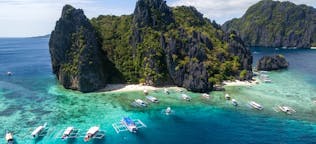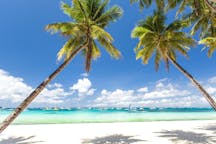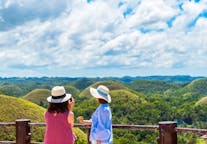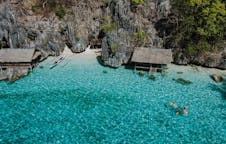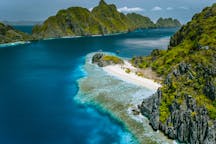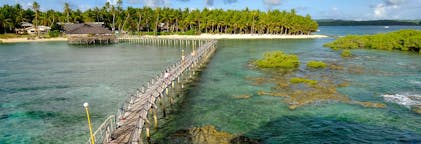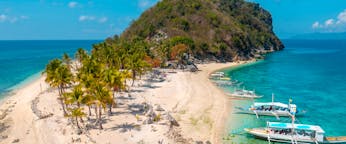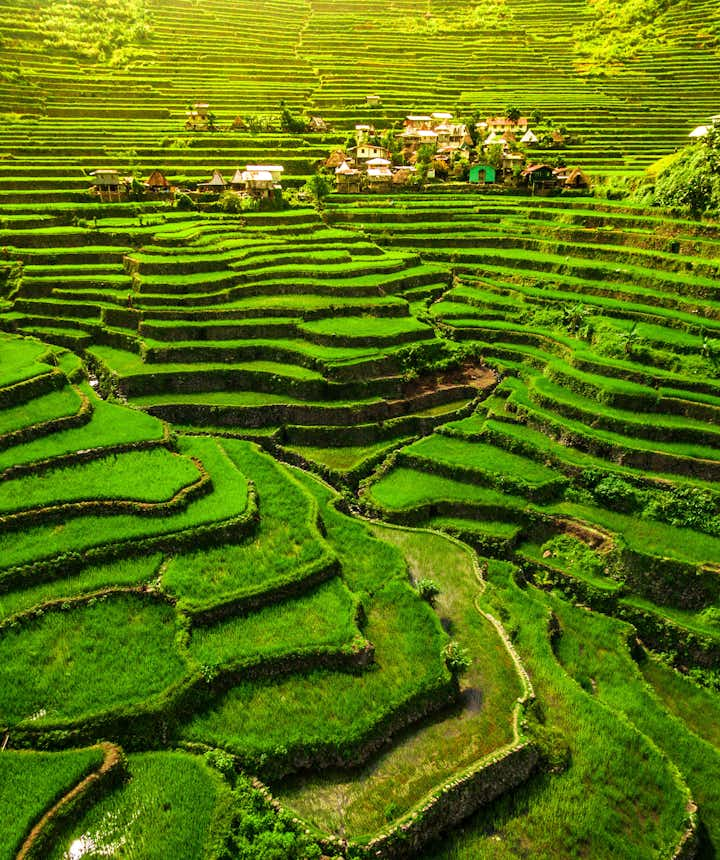
Top 18 Banaue Tourist Spots: Rice Terraces and Nature Trips

- 1. Marvel at the Beauty of Banaue Rice Terraces
- 2. Visit Batad Rice Terraces
- 3. See Bangaan Rice Terraces
- 4. Enjoy Hapao Rice Terraces
- 5. Get a Panoramic View at Banaue Viewpoint
- 6. Explore Banaue Museum
- 7. Visit Tam-An Village
- 8. See Banaue Ethnic Village and Pine Forest Resort
- 9. Discover Hiwang Village
- 10. Experience the Hanging Bridge
- 11. Marvel at the Banaue Arch
- 12. Check Out Aguian View Deck
- 13. Unwind at Awa View Deck
- 14. Visit Batad Saddle Point
- 15. Discover Tappiya Falls
- 16. Trek to Mt. Amuyao
- 17. Relax at Bogyah Hot Spring
- 18. Hike to Mt. Napulawan
- Discover and Experience Banaue
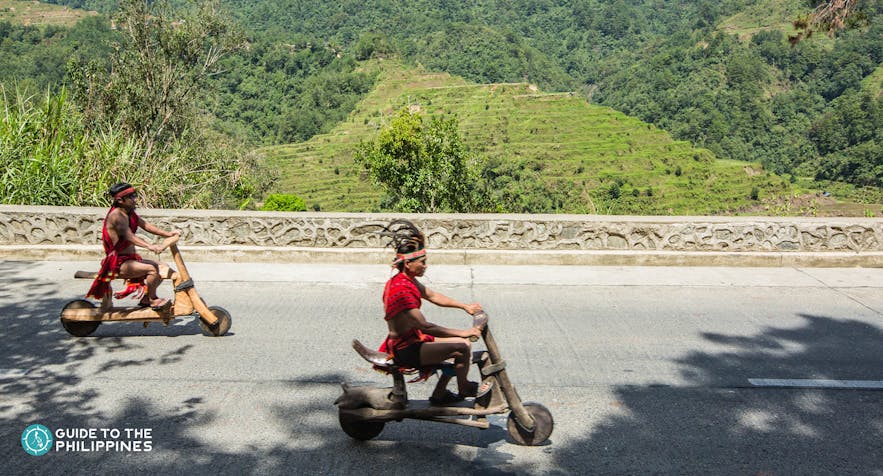
Discover the breathtaking beauty of the province of Banaue. Discover natural wonders, fascinating attractions and have a local cultural immersion in this lovely province. Read this comprehensive guide on the top tourist spots and activities that you can add in your itinerary.
If you want to know what it feels like to be on top of the world, then you have to pay a visit to Philippines' must-see destination for people looking for an authentic countryside experience — Banaue.
- Add tours and activities in Banaue to maximize your travel itinerary
Located in Ifugao Province within the north of Luzon, Banaue prides itself of being the home to the famous Banaue Rice Terraces found in the PHP1000 bill but there’s more to this rustic destination than that just one rice terraces.
Banaue has preserved the generations-old traditions of its indigenous people in the Philippines for decades, making it a must-see destination for people looking for an authentic countryside experience.
Banaue is also home to Batad, an Ifugao village where one can find the Batad Rice Terraces, a high rice field that is over 2,000 years old.
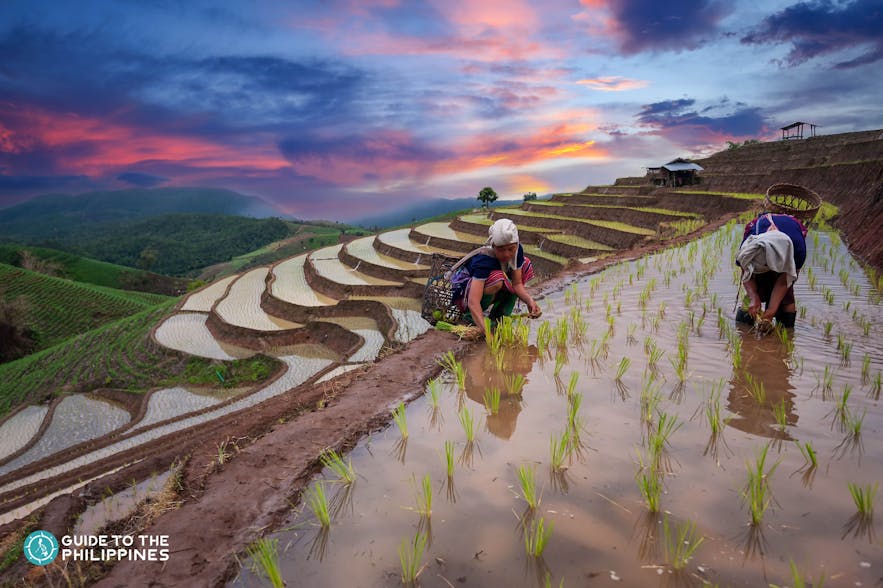 One look from the top of this spectacular landscape and you will be transported back to the time when Ifugao ancestors tirelessly carved the mountain and planted it with rice using only bare hands and stone tools.
One look from the top of this spectacular landscape and you will be transported back to the time when Ifugao ancestors tirelessly carved the mountain and planted it with rice using only bare hands and stone tools.
Banaue also offers a myriad of activities to choose from including visiting a museum and an ethnic village and soaking up the greatness of nature with falls and hot springs to name a few.
Traveling to Banaue is not a walk in the park. A trip from the Philippines’ capital, Manila, takes about nine hours and can only be done by bus, van, or jeepney, a mode of transportation unique to the Philippines.
Despite this, don’t get discouraged for Banaue offers more than just beauty but a whole lot of unique experiences you shouldn’t miss.
If you’re planning a trip to Banaue, below are some tourist attractions that you should take note of and add to your itinerary.
1. Marvel at the Beauty of Banaue Rice Terraces
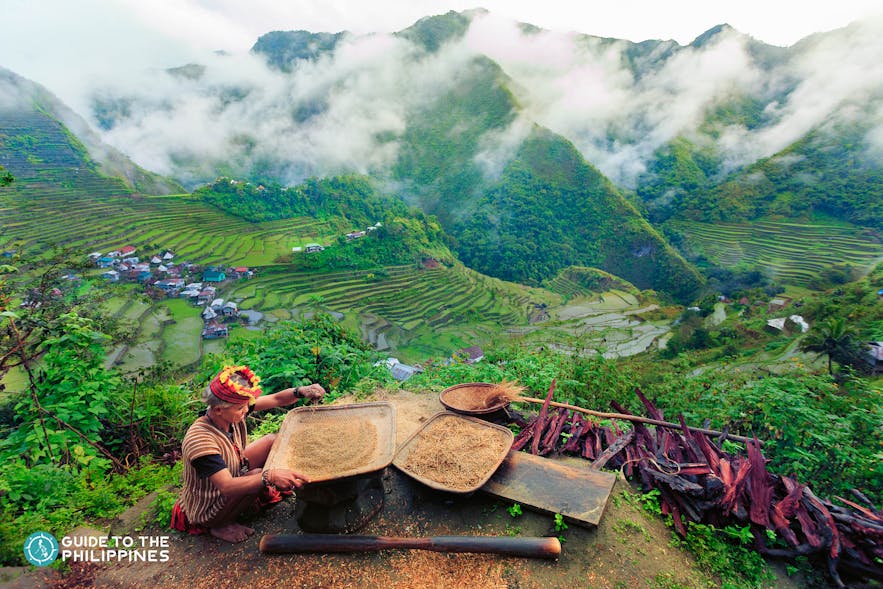
Banaue is the entry point to the rice terraces of the Philippine Cordilleras. A trip to this highland is not complete without checking out the local wonders of the Philippines on this side of the country.
You can explore its rice terrace clusters, five of which have been recognized as UNESCO World Heritage Sites: the Batad Rice Terraces, Nagacadan Rice Terraces, Hungduan (Hapao) Rice Terraces, Mayoyao Rice Terraces, and Bangaan Rice Terraces.
Although not a UNESCO World Heritage site due to the presence of modern structures surrounding it, Banaue Rice Terraces is still considered a National Cultural Treasure of the country.
It is commonly referred to by the locals in Banaue as the 8th Wonder of the World. So, you should still include it in your itinerary to get a complete feel of what Banaue has to offer.
While some tourists opt for just a quick glance at the rice terraces as a proud moment since it’s famous for being in the PHP1000 bill, overnight treks make the experience more unique.
 The treks will also allow you to stay in small villages and Ifugao homestays, allowing you to get firsthand experience of how the locals live. It’s also your chance to marvel at the beauty of the rice terraces while holding a cup of coffee every time you wake up in the morning.
The treks will also allow you to stay in small villages and Ifugao homestays, allowing you to get firsthand experience of how the locals live. It’s also your chance to marvel at the beauty of the rice terraces while holding a cup of coffee every time you wake up in the morning.
You can join a Banaue heritage tour or customize your own if you’re traveling with a group.
2. Visit Batad Rice Terraces
 Nothing is more breathtaking than waking up to the sight of one of the world’s most known rice terraces, the Batad Rice Terraces.
Nothing is more breathtaking than waking up to the sight of one of the world’s most known rice terraces, the Batad Rice Terraces.
It is one of the five inscribed clusters declared as UNESCO World Heritage Sites alongside Nagacadan Rice Terraces, Hungduan Rice Terraces, Mayoyao Rice Terraces, and Bangaan Rice Terraces.
To start your Batad adventure, you’ll have to get to the town proper of Banaue, about 18 kilometers away from Batad. From Banaue, you will have to register at the tourism office and pay an environmental fee.
Then, you can take a public jeep to an area called Saddle, the endpoint of all public commuter vehicles going to Batad.
Other alternative transportation to Saddle is a private jeep or a tricycle that you can charter. The journey to the Saddle is about one hour. Once you’ve been dropped off, you need to walk for at least 20 minutes to get to the village of Batad. So, your Batad daydream begins.
These amphitheater-like rice terraces are a favorite among local and foreign tourists. If it is your first time, get ready to find yourself in awe of its natural beauty.
But admiring it is more than just looking out into the vast emptiness, with the blue sky and lush greenery stretching before you; admiring it means hiking and trekking the rice terraces and discovering hidden gems such as Tappiya Falls and Awa View Deck.
3. See Bangaan Rice Terraces
Although less popular than its neighboring rice terraces, Bangaan Rice Terraces is yet another wondrous landscape to see. From the town proper of Banaue, you may take a jeepney bound to Bangaan or hire a tricycle for a half-day trip.
Bangaan is 15 kilometers from the town proper via the town of Mayoyao and almost one kilometer after the Batad junction.
Staying in Bangaan will make you appreciate the simplicity of life with only the basic accommodation available to tourists, allowing you to mingle with the locals and observe their everyday musings.
Expect to be surrounded by the sight of the valley, the fields, the mountains, and a couple of traditional Ifugao houses which are wooden huts with cogon roofing.
To explore Bangaan Rice Terraces, you will have to trek down for around 20 minutes. Be prepared to have your physical strength tested as it can also be a grueling hike back for those who are not physically fit.
If you’re looking for a more challenging hike, Bangaan can also be your jump-off point for an even longer journey, one that traverses the Bangaan Rice Terraces to Batad and continues to the villages of Cambulo and Pula and ends in Banaue.
4. Enjoy Hapao Rice Terraces
 If you’re tired of the all too familiar Banaue and Batad, a trip to a neighboring municipality, Hungduan, will be your gateway to another UNESCO World Heritage site, the Hapao Rice Terraces.
If you’re tired of the all too familiar Banaue and Batad, a trip to a neighboring municipality, Hungduan, will be your gateway to another UNESCO World Heritage site, the Hapao Rice Terraces.
What makes these rice terraces unique from the rest is that it’s the longest yet the easiest to trek due to its gentle slopes. The terraces are made of solid stone walls with heights reaching up to 20 feet. Its view deck is also just beside the road making it easier to bask in its captivating beauty.
Although the hike is a lot easier, getting to Hungduan is not, as you will have to pass through bumpy mountain roads. But it’s worth it once you’re greeted with the picturesque greenery.
Hapao also offers relaxing views of mountain streams, a river in the middle of the trail, and of Bogyah Hot Springs that you can take advantage of after a day of traveling and trekking.
The hike can be made more memorable by hiring a local guide who can tell you more about Hungduan, its people and culture, and some secret spots hidden in the hills.
5. Get a Panoramic View at Banaue Viewpoint
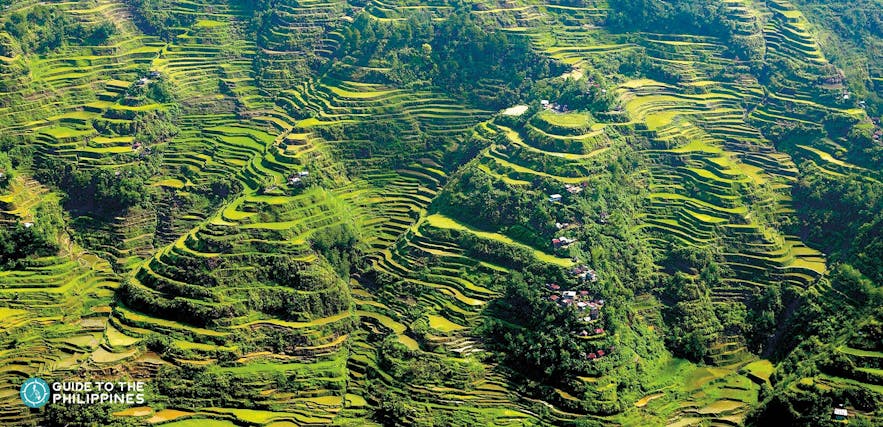 No trip to Banaue is complete without taking selfies at the Banaue Viewpoint, considered to be the best spots where one can get the most magnificent view of the Banaue Rice Terraces. There are four different viewpoints which you can reach by hiring a tricycle.
No trip to Banaue is complete without taking selfies at the Banaue Viewpoint, considered to be the best spots where one can get the most magnificent view of the Banaue Rice Terraces. There are four different viewpoints which you can reach by hiring a tricycle.
Having a quick stop at any of these viewpoints will give you a chance to interact with the locals and take snapshots of elderly Igorot and Bontoc women clad in their full tribal wear.
There are also souvenir shops on the way to the viewpoints for those shopping for mementos and local cafes for a quick refreshment.
6. Explore Banaue Museum
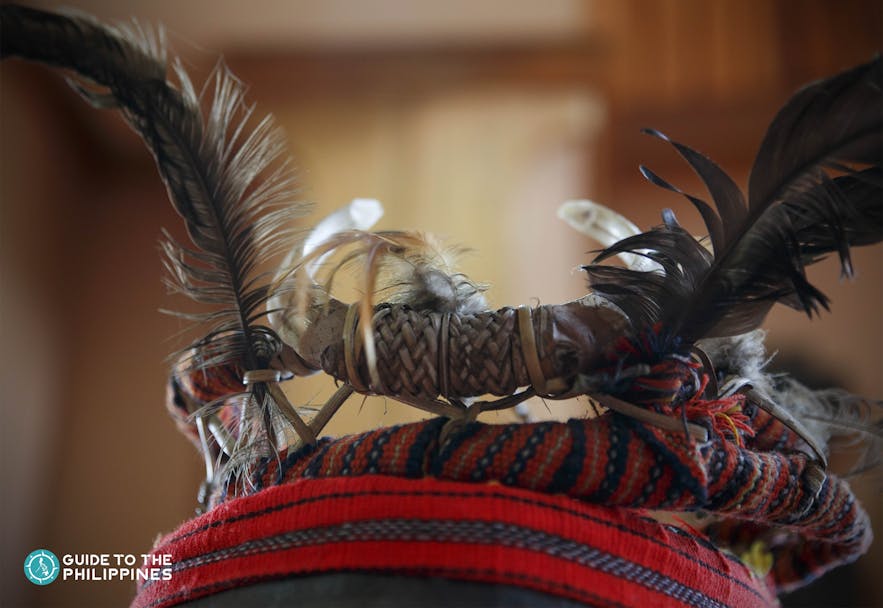 Located at the Banaue View Inn, Banaue Museum is just a stone’s throw away from the town proper.
Located at the Banaue View Inn, Banaue Museum is just a stone’s throw away from the town proper.
Revel in the rich history and culture of the Igorots by observing the vintage photographs depicting the life of the people, books written by famous anthropologist Otley Beyer who moved to Banaue in the 1900s, and some treasured jewelry, weaponry, Igorot artifacts, and traditional clothing and mountain baskets.
There's an entrance fee to the museum and it’s open from 7AM to 4PM every day.
7. Visit Tam-An Village
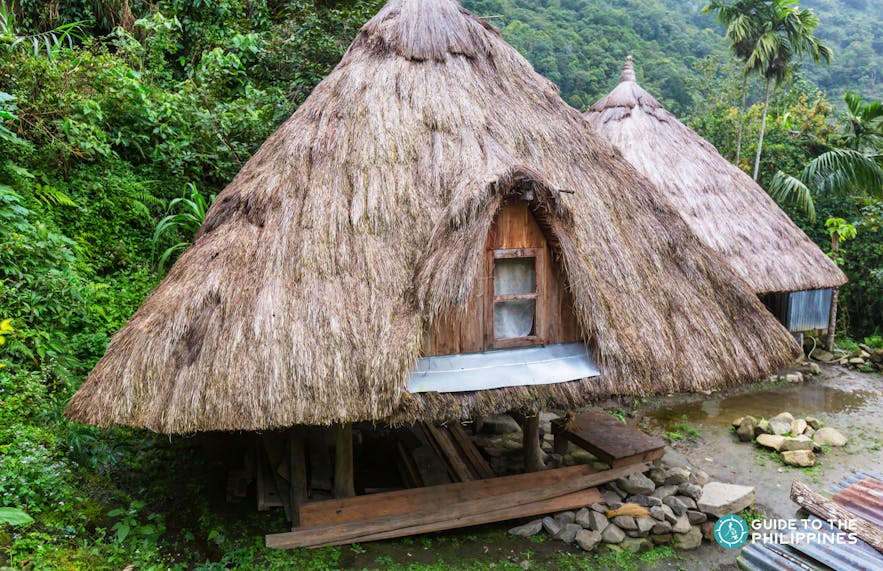 Take your cultural excursion a notch higher by immersing yourself in the local culture. Visit Tam-An, one of the most visited traditional Ifugao villages.
Take your cultural excursion a notch higher by immersing yourself in the local culture. Visit Tam-An, one of the most visited traditional Ifugao villages.
It gives a glimpse of the typical life of the locals with the native houses and the rice terraces surrounding it. To get to this village, simply get off at Banaue Hotel and walk downhill.
It’s better to visit this village while it’s still being preserved by the people. With time and economic challenges slowly threatening the community’s sustainability, it will not be long enough until the Tam-An heritage will be damaged.
Make sure to respect the culture of the people and practice responsible tourism when you visit though to help preserve the heritage of Tam-An.
8. See Banaue Ethnic Village and Pine Forest Resort
If you’re looking for one of the best places to stay in Banaue, then Banaue Ethnic Village and Pine Forest Resort just might as well be on your list.
Just around 7 kilometers away from the town proper and just about 2 kilometers past the Banaue Viewpoint, this accommodation can easily be accessed via a jeepney.
It gives tourists a more authentic experience with its accommodations designed like native Ifugao huts. You can choose from several accommodation options, from standard rooms to modern and traditional Ifugao houses.
And because it’s tucked away from the hustle of the town, you’re sure to have a peaceful vacation surrounded by rice paddies and pine trees, occasional chirping of the birds, and a chilly, cool breeze from the riverside.
There’s also an organic farm and a pool with water coming from natural spring, giving guests like you a more relaxing experience.
9. Discover Hiwang Village
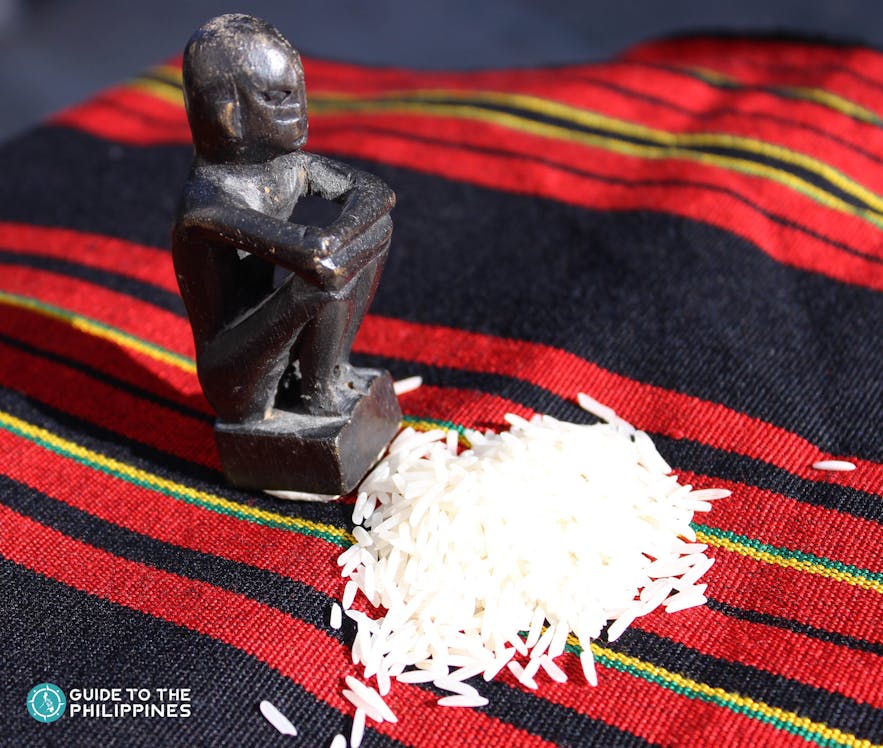 Hiwang Village is another native village worth visiting if not for the rice terraces, then for the native houses and the Ifugao wooden carvings and artifacts. It is in Hiwang Gohang, Banaue and home to some 200-year old authentic ba-li or native houses. These huts offer a pristine view of Banaue’s vastness.
Hiwang Village is another native village worth visiting if not for the rice terraces, then for the native houses and the Ifugao wooden carvings and artifacts. It is in Hiwang Gohang, Banaue and home to some 200-year old authentic ba-li or native houses. These huts offer a pristine view of Banaue’s vastness.
If you want to bring home some intricately sculptured rice gods, also known as bululs by the locals, Hiwang Village has some of the best to offer. Houses in Hiwang Village are carefully preserved by the locals.
Don’t be shocked to find skulls displayed outside of the native huts too as this is part of their culture, a practice where heads were cut off during headhunting and skewed on a bamboo. After offering it to the chieftain, it will then be buried until the skin rots for two years before it is put outside the house.
10. Experience the Hanging Bridge
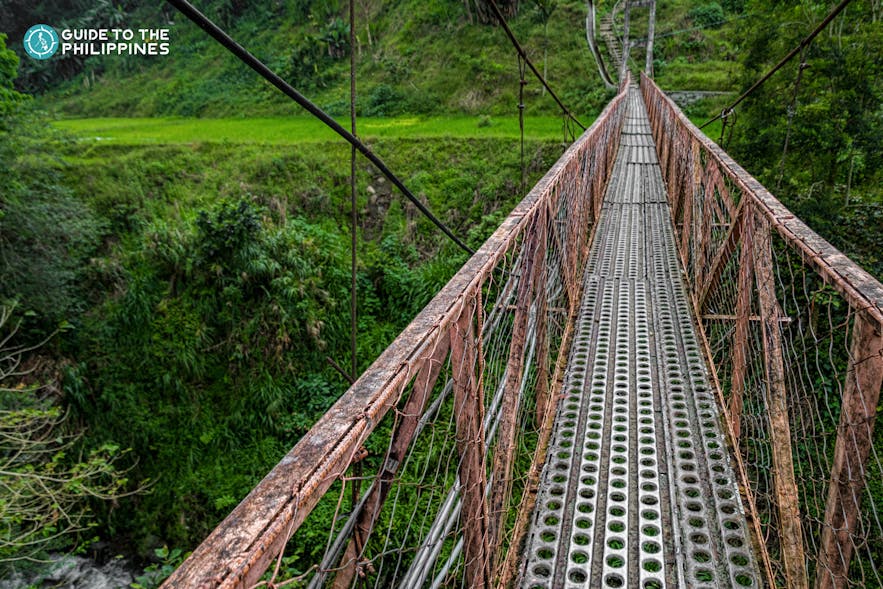 Often taken by school children on their way to school, this hanging bridge is also a must-experience especially for first-time Banaue visitors. It is surrounded by sights of rice paddies and some houses in the town.
Often taken by school children on their way to school, this hanging bridge is also a must-experience especially for first-time Banaue visitors. It is surrounded by sights of rice paddies and some houses in the town.
The bridge also serves as a connection to Batad, home to the Batad Rice Terraces.
11. Marvel at the Banaue Arch
If you have seen photos of tourists with a welcome arch in Banaue as their backdrop, that’s the Banaue’s Arch. It may be unimpressive for some but still a good starting point for your Banaue adventure.
Here you will find little stalls selling snacks for starving tourists who were just about to end their close to 9-hour long road trip from Manila. A quick look on the side of the arch and you will almost catch a glimpse of the beauty that awaits you.
12. Check Out Aguian View Deck
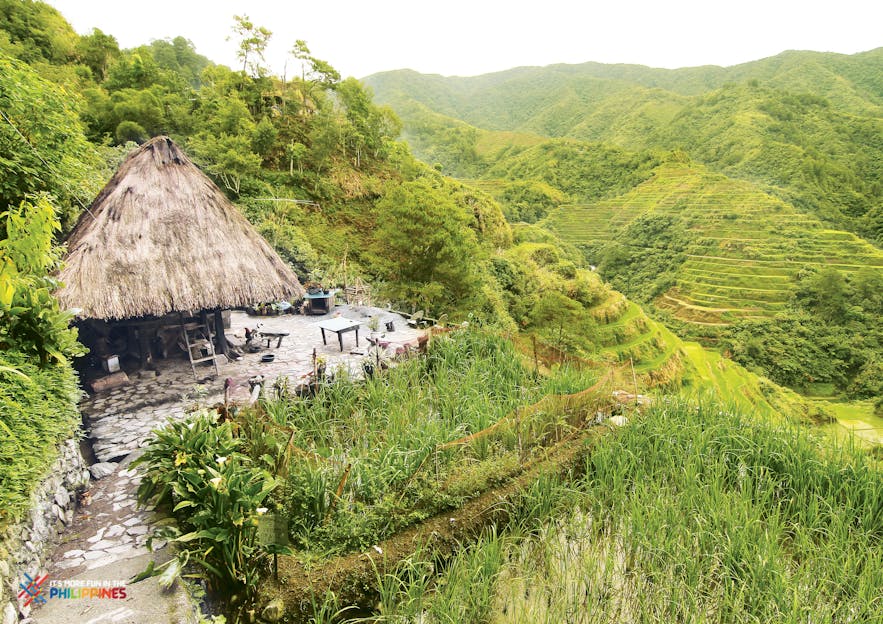 Photo from the Philippine Department of Tourism
Photo from the Philippine Department of Tourism
Located along Banaue Bontoc road, this view deck is just 10 to 15 minutes away from the town proper and offers tourists a beautiful scenery of the terraces.
It’s best to check out this viewpoint in the morning until noon as it may get foggier in the afternoon. There are also souvenir shops where you can find Ifugao wood carvings and accessories.
13. Unwind at Awa View Deck
If you want the best view of the Batad Rice Terraces, go trek to Awa View Deck and be treated to a panoramic view of the century-old treasure. To get to this spot, you will have to endure steep descents and ascents for more than an hour.
This is not for the faint-hearted. It’s best to start the trek in the morning when the chilly air can still kiss your skin and make the hike more tolerable.
Awa View Deck is also a start-off point for those looking to visit Sitio Patpat, a little village with its own share of rice terraces too.
Expect to experience a more grueling trek on your way back with rocky and slippery land to step on. So, if you’re worried about getting hungry and draining your energy in both ways, make sure to bring extra food with you.
14. Visit Batad Saddle Point
Exploring the Batad Rice Terraces and coming from Banaue will not be possible without passing by Batad Saddle Point, the entry point to the UNESCO World Heritage site.
You can charter a jeepney, that travels twice daily, from Banaue to get here.
15. Discover Tappiya Falls
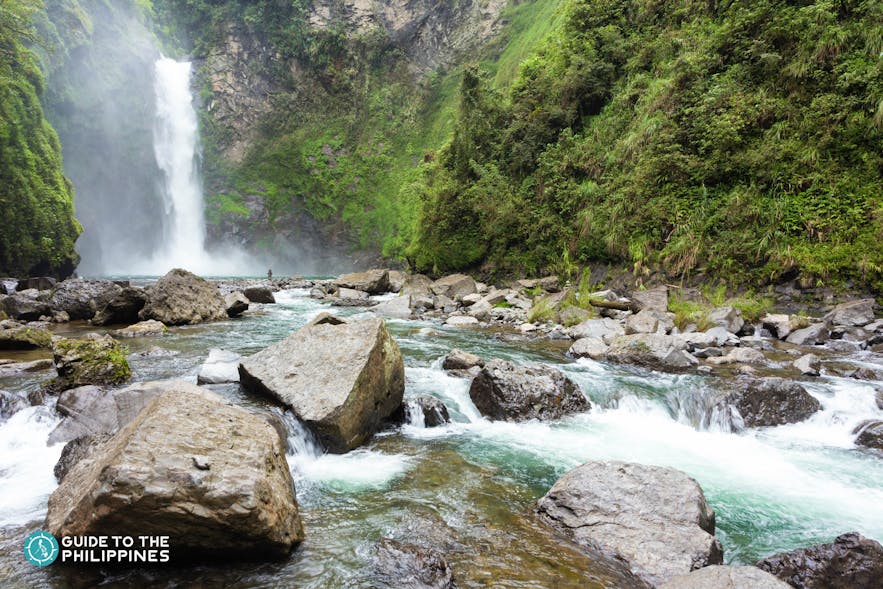
Soak up not only the beauty of the Batad Rice Terraces but also the refreshing water from Tappiya Falls, a hidden gem nestled within the villages of the Cordilleras.
Yet another challenging trek is needed to find it though because as with all things in life, nothing good comes easy. So, prepare yourself to be mesmerized with this waterfall after a long journey.
You may begin your hour-long trek from Ramon’s Native Homestay. There are resting camps along the way, enough for you to refuel for the rest of the trip. If any, this trek to the falls will also give you a closer look at the rice terraces.
Bring a walking stick with you to make your step easier as you will be encountering muddy slopes and slippery footpaths. If you want to stay and swim a little longer, try starting your Tappiya adventure early morning.
16. Trek to Mt. Amuyao
If you're craving for some real mountain hiking, the Cordilleras have mountains you can conquer, aside from trekking the rice terraces. One of which is Mt. Amuyao, a 2,702-meter-high mountain, which is located in Sitio Macalana in Barlig and is the highest peak in the Mountain Province.
It is popular among seasoned hikers so do not force yourself to hike it if you’re not physically ready. Before you can hike Mt. Amuyao, you will need to register first at the Municipal Tourism Office of Barlig and pay a corresponding fee.
Hiring a guide is also required. You may also choose to hike overnight. Hiking Mt. Amuyao takes around three to five hours, depending on your group’s pace. Side trips to other spots such as Tomallan Falls, Monkingub Falls, and Lake Tufub among others can also take up your time.
17. Relax at Bogyah Hot Spring
The cold weather atop the highest point in the Philippines calls for a refreshing warm dip. Thanks to Bogyah Hot Spring, you’re sure to have exactly what you need.
Located at the upper part of the Hapao River and sandwiched between Barangays Hapao and Baang, Bogyah Hot Spring can be accessed via a close to 40-minute hike from the national road, beside the muddy rice paddies of Hapao Rice Terraces.
If you have never walked atop a high rice field before, then this will be one for the books so make sure to document every step. However, it’s not as hard as the trail going to Tappiya Falls. With temperatures ranging from 39 to 40°, your aching muscles from all those treks will definitely be soothed.
18. Hike to Mt. Napulawan
Another gem of Hungduan in Ifugao Province is Mt. Napulawan not only for being enchanting but because of its historical significance. It was believed to be the mountain where the Japanese Imperial Army General Tomoyuki Yamashita sought refuge during the war.
Its name, derived from the Ifugao word “pulaw”, which means “white” which perfectly describes the sea of clouds that surround the top of the mountain. The trails—Hungduan and Hapao—are both very challenging with Hungduan being the more common jump off point among hikers.
Discover and Experience Banaue
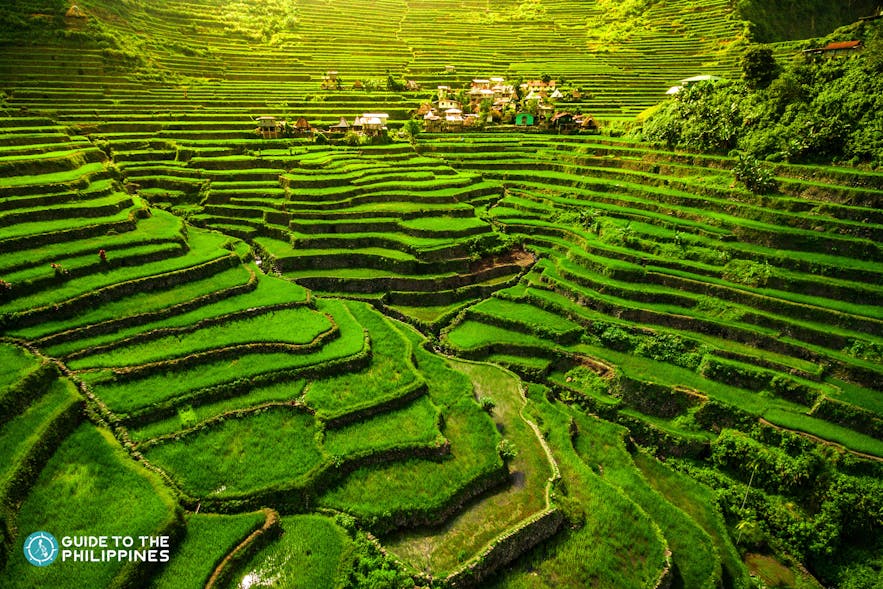
Visiting Banaue requires a lot of logistical planning and coordination if you want to make the most out of your visit especially with some areas being incredibly challenging to reach. Banaue isn’t a highly recognized destination around the world for nothing.
Its rice terraces will not be declared as UNESCO World Heritage Sites only because of the picturesque views it offers to the spectators, but because of the historical significance it holds, the culture it represents, and the timeless heritage its story is reflective of.
Banaue is also home to the Cordillera mountain ranges, an equally important refuge during the Second World War.
It will also not be worth every dime if you won’t have an experience of a lifetime. So, if you’re a culture geek, travel through the native Ifugao villages and get to know the locals, most of whom have knowledge passed down from generations before them.
Learn how they preserve their heritage firsthand and bask in the rich knowledge about their artifacts, designs, traditions, tribal wear, wooden carvings, and folk tales.
For those who are thirsty for some active adventures, you won’t run out of treks and hikes to do as the rice terraces themselves are nestled within forests and mountains. And because Banaue is high land, there is a handful of other mountains to hike.
Lastly, with the perfect play of nature in Banaue, you won’t have to worry about relaxing and reconnecting with the world. It’s the best place to detox from the highs and lows of life; the hustle and bustle of the city.
To say that the journey is long, and might be rough when you decide to go to Banaue may be true.
But, as with all journey that brings immense joy and memorable experiences, the difficulties consist of hour-long treks, half-day road trips, and slippery mountain slopes are all well worth it in the end. You’re on top of the world, after all.
Banaue is close to other great tourist destinations such as Sagada and Baguio. Check out Baguio tours and activities that you can add to your bucket list during your trip in the Northern Philippines.
Other interesting articles

4 Days Bohol Itinerary: Chocolate Hills, Island Hopping, Loboc River Cruise
The island of Bohol is one of the top tourist destinations in the Philippines and the most beautiful islands in the Philippines, thanks to its natural attractions, which include pristine beaches, stun...Read more
Must-Try Tasting Menu in Manila & Nearby: Degustation Restaurants
Photos by Gallery by Chele (left) and Lore Manila (right) If you want to experience the local culture in the Philippines, one of the best ways to immerse yourself in it is to try different kinds of f...Read more
11 Coffee Shops in Antipolo Rizal to Visit: Overlooking View, Instagrammable, Romantic Cafes
Photos by Cafe Rizal and Cafe Agusta Antipolo, Rizal is one of the favorite destinations for those living in Metro Manila looking for a quick escape from the city. At around only 13KM from the capita...Read more

Download the Philippines’ biggest travel marketplace to your phone to manage your entire trip in one place
Scan this QR code with your phone camera and press the link that appears to add the Philippines’ biggest travel marketplace into your pocket. Enter your phone number or email address to receive an SMS or email with the download link.









